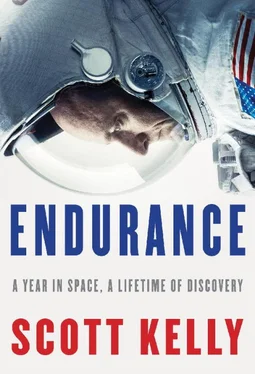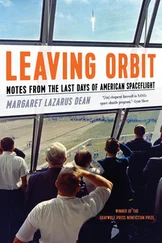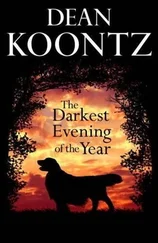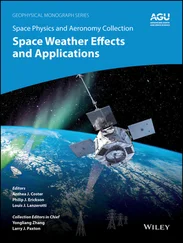I won’t get to spend time outside the station until my first of two planned spacewalks, which won’t be for almost seven months. This is one of the things that some people find difficult to imagine about living on the space station—the fact that I can’t step outside when I feel like it. Putting on a spacesuit and leaving the station for a spacewalk is an hours-long process that requires the full attention of at least three people on station and dozens more on the ground. Spacewalks are the most dangerous thing we do on orbit.
Even if the station is on fire, even if it’s filling up with poisonous gas, even if a meteoroid has crashed through a module and our air is rushing out, the only way to escape the station is in a Soyuz capsule, which also needs preparation and planning to depart safely. We practice dealing with emergency scenarios regularly, and in many of these drills we race to prepare the Soyuz as quickly as we can. No one has ever had to use the Soyuz as a lifeboat, and no one hopes to.
The space station is an international effort and a shared facility, but in practice I spend almost all of my time on the cluster of modules—which, together with American and Japanese visiting vehicles—we call the U.S. operational segment. My cosmonaut colleagues spend the majority of their time on the Russian segment, consisting of the Russian modules as well as the visiting Russian Progress and Soyuz spacecraft.
The module where I spend a lot of my day is the U.S. module formally named Destiny, but which we mostly just call “the lab.” It’s a state-of-the-art scientific laboratory with walls, floors, and ceiling packed with equipment. Because there is no gravity, every surface is usable storage space. There are science experiments, computers, cables, cameras, tools, office supplies, freezers—crap all over the place. The lab looks cluttered—people with OCD would probably have trouble living and working here—but the things I use most I can put my hands on in seconds. There are also a large number of things I would not be able to put my hands on if asked—without gravity, items wander off regularly, and the ground will often email us WANTED posters regarding lost objects, like the ones the FBI puts in post offices. Occasionally one of us will dislodge a tool or part that has been missing for years. Eight years is the record, so far, for a missing object reappearing.
Most of the spaces where I spend my time have no windows and no natural light but rather bright fluorescent lights and clinical white walls. Devoid of any earthly color, the modules seem cold and utilitarian, like a prison of sorts. Because the sun rises and sets every ninety minutes, we can’t use it to keep track of time. So without my watch keeping me on Greenwich Mean Time and a schedule tightly structuring my days, I’d be completely lost.
It’s hard to explain to people who haven’t lived here how much we start to miss nature. In the future there will be a word for the specific kind of nostalgia we feel for living things. We all like to listen to recordings of nature—rainforests, birdcalls, wind in the trees. (Misha even has a recording of mosquitoes, which I think goes a bit too far.) As sterile and lifeless as everything is up here, we do have windows that give us a fantastic view of Earth. It’s hard to describe the experience of looking down at the planet. I feel as though I know the Earth in an intimate way most people don’t—the coastline, terrain, mountains, and rivers. Some parts of the world, especially in Asia, are so blanketed by air pollution that they appear sick, in need of treatment or at least a chance to heal. The line of our atmosphere on the horizon looks as thin as a contact lens over an eye, and its fragility seems to demand our protection. One of my favorite views of the Earth is of the Bahamas—a large archipelago with a stunning contrast from light to dark colors. The vibrant deep blue of the ocean mixes with a much brighter turquoise, swirled with something almost like gold, where the sun bounces off the sandy shallows and reefs. Whenever new crewmates come up to the station for the first time, I make a point of taking them to the Cupola (a module made entirely of windows looking down on Earth) to see the Bahamas. That sight always reminds me to stop and appreciate the view of the Earth I’ve been given the privilege of seeing.
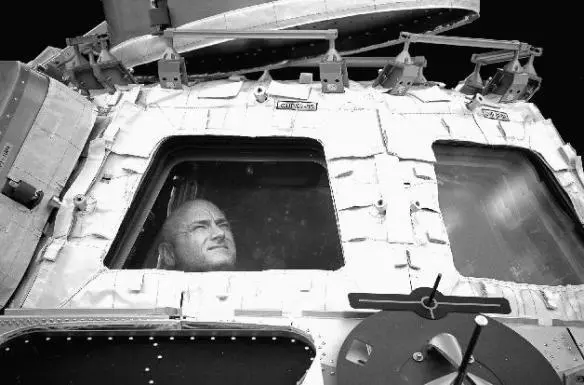
Looking down at Earth from the Cupola module on board ISS. Credit 4 ILLUSTRATION CREDITS Nathan Koga 1, 2, 5, 6, 7, and 8: NASA; 3 and 4: NASA/Scott Kelly Illustrations NASA 9 and 10; Scott Kelly 11 and 12, U.S. Navy 13; NASA 14; NASA 15 and 16; NASA 17 and 18; NASA 19 and 20; NASA 21 and 22; Scott Kelly 23, Stephanie Stoll/NASA 24, NASA 25; NASA/Bill Ingalls 26, NASA 27; NASA 28, NASA/Bill Ingalls 29; NASA/Bill Ingalls 30, NASA 31; NASA 32, NASA/Bill Ingalls 33; NASA/Bill Ingalls 34 and 35; NASA/Bill Ingalls 36, NASA 37; NASA 38 and 39; Scott Kelly/NASA 40, NASA 41; NASA 42, NASA/Scott Kelly 43; NASA 44, NASA/Scott Kelly 45; NASA/Scott Kelly 46, NASA 47; NASA/Scott Kelly 48 and 49; NASA/Scott Kelly 50 and 51; NASA/Bill Ingalls 52 and 53; NASA/Bill Ingalls 54; NASA 55
Sometimes when I’m looking out the window it occurs to me that everything that matters to me, every person who has ever lived and died (besides the six of us), is down there. Other times, of course, I’m aware that the people on the space station with me are the whole of humanity for me now. If I’m going to talk to someone in the flesh, look someone in the eye, ask someone for help, share a meal with someone, it will be one of them.
—
SINCE BEFORE the space shuttle was retired, NASA has been contracting with private companies to develop spacecraft capable of supplying the station with cargo and, at some point in the future, new crews. The most successful private company so far has been Space Exploration Technologies, better known as SpaceX, which produces the Dragon spacecraft. Yesterday, a Dragon launched successfully from the Kennedy Space Center. Since then, Dragon has been in orbit a safe ten kilometers from us. This morning, our aim is to capture it with the space station’s robot arm and attach it to the berthing port on station. The process of grappling a visiting vehicle is a bit like playing an arcade claw machine, except that it involves real equipment worth millions of dollars flying at impossible speeds. Not only could an error cause us to lose or damage the Dragon and the valuable supplies on board, but a slip of the hand could crash the visiting vehicle into the station. A Progress cargo spacecraft once struck the old Russian space station Mir, and its crew was lucky not to have been killed by the rapid loss of atmosphere.
These uncrewed rockets are the only means by which we can get adequate supplies from Earth. The Soyuz spacecraft has the capability to send three human beings to space, but there is almost no room left over for anything else. SpaceX has had a lot of success so far with their Dragon spacecraft and Falcon rocket, and in 2012 they became the first private company to reach the International Space Station. They hope to be able to fly astronauts on the Dragon in the next few years. If they can pull that off, they will be the first private company to carry human beings to orbit, and that launch will be the first time astronauts leave Earth from the United States since the space shuttle was retired in 2011.
Right now, Dragon is carrying 4,300 pounds of supplies we need. There is food, water, and oxygen; spare parts and supplies for the systems that keep us alive; health-care supplies like needles and vacuum tubes for drawing our blood, sample containers, medications; clothing and towels and washcloths, all of which we throw away after using them for as long as we can. Dragon will also be bringing new science experiments for us to carry out, as well as new samples to keep the existing ones going. Notable among the science experiments is a small population of twenty live mice for a study we will be conducting on how weightlessness affects bone, muscle, and vision. Each resupply spacecraft also carries small care packages from our families, which we always look forward to, and precious supplies of fresh food that we enjoy for just a few days, until it runs out or goes bad. Fruits and vegetables seem to rot faster here than on Earth. I’m not sure why, and seeing the process makes me worry that the same thing is happening to my own cells.
Читать дальше
